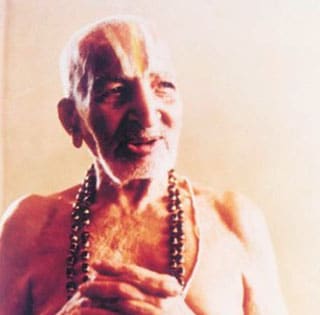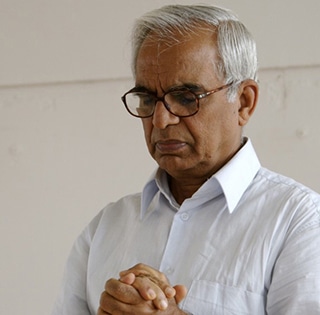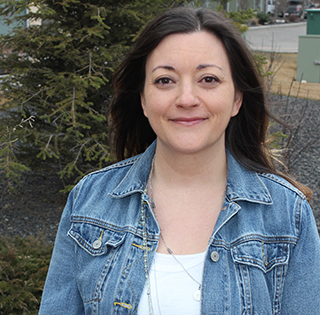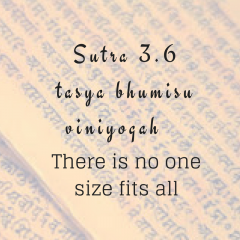
Why Viniyoga is our Chosen Methodology
Viniyoga
Viniyoga is an ancient Sanskrit term that means appropriate application and implies differentiation and adaptation. It is a holistic healing discipline that addresses the entire person (body, breath, mind, behaviors, emotions, & spirit) in an interconnected way.
Its teaching emphasizes a comprehensive and authentic transmission of yoga designed for everyone’s unique body and mind. It is a therapeutic approach to yoga that adapts the various means and methods of practice to each individual’s unique condition, needs, and interests – giving each practitioner the tools to individualize and actualize the process of self-discovery and personal transformation.
The practices of yoga provide the means to support each practitioner to embrace their life, health, and wellness fully and compassionately. This requires understanding a person’s present condition, personal potential, appropriate goals, and the means available. Just as every person is different, these aspects will vary with each individual.
What is Viniyoga
The History of Viniyoga

Śri Krishnamacharya
Śri Krishnamacharya is one of the most influential Yogis of our era. He was an accomplished scholar in Vedic philosophy, an Āyurvedic Healer, and a reviver of ancient yoga traditions.
The teaching of Viniyoga was passed in this and the last century through Krishnamacharya (Kriṣṇamācārya) and dated back to his ancestor from the 7th to 9th centuries. He was an Indian yoga teacher, ayurvedic healer, and scholar who is often seen as one of the most important gurus of modern yoga—sometimes called “the father of modern yoga” because of his vast influence on the development of postural yoga.

T.K.V. Desikachar
Son of Śri Krishnamacharya, T.K.V. Desikachar studied daily with his father for 29 years until his early 50s, when his father died. During his thirty years of study, Desikachar learned the practice and application of yoga techniques and texts for therapeutic, exercise, and spiritual purposes and founded an individualized form of yoga therapy called Viniyoga, a term from the Yoga Sutras of Patanjali, as a holistic approach aligned with the Yoga Sutras.
T.K.V. Desikachar carried on his father’s teachings as the Krishnamacharya Yoga Mandirum (KYM) founder in Chennai, India. Here, he began to call his method Viniyoga.

Melanie Taylor
Melanie began her yoga studies in 1990 at a time of deep pain. She is grateful for her teacher’s grace, love, and unconditional listening. Over several years, she was taken under her teacher’s wing to develop her personal practice, which she attributes to saving her life. She studied as a student of the Hatha lineage for over 25 years before transitioning to Viniyoga in 2015.
Over 32+ years, she has learned these ancient lineages’ principles and practical tools, with application in Ayurveda and somatic coaching. Since 2014, she has made the breadth and depth of these teachings available to her clients and students.
Yoga Sutra 3.6: Embracing Individuality on the Path of Self-Awareness
Patañjali reminds us that the journey toward self-awareness is not a one-size-fits-all approach. We are all distinct individuals, each on a unique path of growth and transformation. Our interests, needs, and capacities vary, making the tools to attain awareness and understanding equally diverse. Furthermore, our evolution is ongoing, demanding self-acceptance and compassion for our current selves, including our strengths and challenges.
While a seated mantra meditation might resonate for some, others might find inner peace through a contemplative walk in nature. The possibilities for techniques are boundless, with the essential factor being a steadfast commitment to what resonates personally, even as our preferences evolve. Honesty about our present stage is crucial, and it’s essential not to rush through or neglect any phase of our journey.
तस्य भूमिषु विनियोगः I
tasya bhūmiṣu Viniyogaḥ
Its application is in stages.Yoga Sūtra III.6

Embracing the Three Stages of Life
When exploring the historical journey of Krishnamacharya’s students, a crucial insight emerges: the duration of their learning and the particular life stages within which this education unfolded. Many key facets of Viniyoga that command our attention today were traditionally reserved for the mid-stage of life.
One remarkable example is Srivatsa Ramaswami, whose father shared a close bond with Krishnamacharya. Ramaswami dedicated an impressive 33 years to studying under Krishnamacharya. As time unfolded, he transformed into a Vinyasa yoga instructor and the renowned author of the book “Yoga for the Three Stages of Life: Developing Your Practice as an Art Form, a Physical Therapy, and a Guiding Philosophy, Inner Traditions.” Within this influential work, Ramaswami eloquently outlines the concept of the three life stages, a perspective that continues to illuminate our understanding.
This profound wisdom forms the bedrock of “appropriate application” within Viniyoga. It reminds us that yoga was never meant to be a one-size-fits-all regimen. Instead, it was conceived to be flexibly adapted to each practitioner’s unique moment. This practice isn’t something we master once and for all; it’s a lifelong journey of introspection and the adept utilization of yoga’s tools as we traverse various stages of life – our own and those of our students.
“During the early part of life, learning yoga as a physical art form is most beneficial for the self-confidence and discipline it instills. In middle age, yoga should focus on physical therapy and maintaining optimum health as far into life as possible. In the last stages of life, the practitioner will be ready to focus on the ultimate goal of yoga--true understanding of the philosophy behind it and the realization of truth.”
Srivatsa Ramaswami from the book Yoga for the Three Stages of Life
Unlocking Viniyoga’s Essence: A Holistic Approach to Yoga Practice
Logistically, Viniyoga unfolds through the rich tapestry of Yoga Sutras, encompassing practices like āsana, prāṇāyāma, bandha, sound, chanting, meditation, personal ritual, and text study. Yet, beneath this practical framework lies a deeper context – the art of appropriately applying these yoga tools to one’s unique journey.
This context involves the interplay of Dharma, Swadharma, and swabhav. Dharma encapsulates how we fulfill responsibilities to ourselves, others, the Earth, the universe, and the divine – our intrinsic purpose. Swadharma involves practicing one’s personal mission, while swabhav encompasses innate traits, nature, capacities, current condition, potential, goals, and means. These facets differ not only within individuals but also from one person to another.
The Yoga Sutras emphasize genuine self-care through tapas, the disciplines nurturing multidimensional well-being. At the Life of Wellness Institute, we extend this ethos to encompass self-compassion.
Ultimately, our practice becomes a mirror reflecting our authentic selves across all koshas (layers) – be it functional anatomy, physiology, emotions, self-perception, beliefs about ourselves and the world, or our future trajectory. We harness a diverse range of yoga tools, creating sympathetic and parasympathetic balance, nurturing love, compassion, forgiveness, tolerance, and clarity. Simultaneously, our immune function improves, structural integrity solidifies, sleep quality elevates, and our life’s path becomes clearer. It’s a transformative journey aligning us with our essence and purpose.
What is Yoga Therapy?
Yoga Therapy draws its roots from Patañjali’s yoga tradition and the holistic Ayurvedic health system. This approach involves adapting and applying yoga techniques and practices to support individuals navigating health challenges of varying degrees.
The overarching objectives of Yoga Therapy encompass:
- Reducing the symptoms of suffering that can be reduced
- Managing the symptoms that cannot be reduced
- Rooting out causes wherever possible
- Improving life function
- Shifting attitude and perspective in relationship to life’s challenges





